#clown wrasse
Explore tagged Tumblr posts
Text


Lagoon reef with staghorn corals, royal angelfish, Gaimard's rainbowfish, and wrasses By: Wayne & Karen Lukas From: The Fascinating Secrets of Oceans & Islands 1972
#coral#cnidarian#invertebrate#royal angelfish#marine angelfish#perciform#bony fish#fish#clown wrasse#wrasse#labriform#1972#1970s#Wayne Lukas#Karen Lukas#The Fascinating Secrets of Oceans & Islands
92 notes
·
View notes
Photo

Longtooth Grouper - Valka Castle
Endless Ocean: Blue World, Nintendo Wii
front-facing creatures in this game will never not be funny to me. it’s the squinkler he’s on his way…
thank you so much for the submission!
Submitted by BBB
#eo photo submission#endlessocean#endless ocean#endless ocean 2#endless ocean blue world#endlessoceanphotos#nintendo wii#wii#longtooth grouper#clown wrasse#valka castle
14 notes
·
View notes
Text
Salmonoid and A Wrasse



#lilywily post#lilywily art#murder drones#Murder drones au#Ocean au#fishuary2024#sockeye salmon#Wrasse#Clown wrasse#Fishuary
8 notes
·
View notes
Text
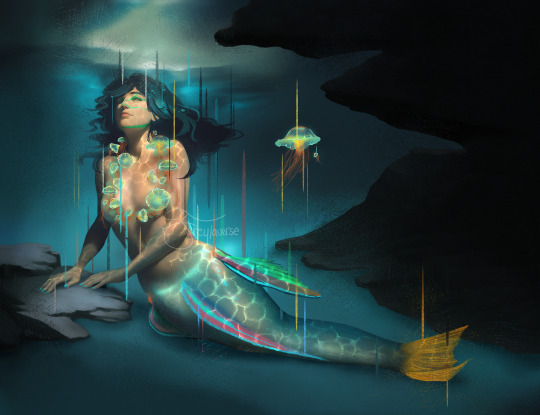
Mermay Day 1 | Lei
#mermay#mermay 2024#mermaid#ehehehe it's my favourite time of year#i almost never do mermay stuff despite loving mermaids#because i'm a busy bee#but by god i will try this year#also this one is based on the african clown wrasse
11 notes
·
View notes
Text
A Tragic Die-off in our Saltwater Tank!

View On WordPress
0 notes
Text
List of zora designs i haven't seen yet or super rare! feel free to add other suggestions :)
Flasher Wrasse
Lancetfish
Flying Gurnard
Arowana
Piebald sharks
Longnose Hawkfish
Clown Triggerfish
Velvet Lantern Shark
Butterfly fish
Tripodfish
Emperor Shrimp
Hermit crab zora (shells on their heads)
Sea Raven
Zora that'd be cool to see more of!
Nudibranch
Jellyfish
Crustacean
Seahorse
Prehistoric
49 notes
·
View notes
Text
Shark Genitals & World Building

So, I've seen this Q&A a few times now and it really got me thinking about Fish-man biology.
Now, to be clear, I think it's pretty clear Oda isn't being entirely serious. When you look at how he designs his characters he goes for whatever is fun. He's not doing extensive research on whatever aquatic species he slaps on his fish-men or Merfolk characters. This is why for a lot of them, if you look up what they are mixed with they rarely share much if anything with the animal he's picked.
Saying a character has two dicks is funny, so Hody has two dicks--that's all.
But taking the answer more seriously the idea that at least some (because they do vary so widely from fish-person to fish-person) have changed genitals because of their added fish anatomy is interesting from a world-building perspective.
As someone who has a special interest in animal biology and has watched a lot of documentaries I can say that fish have really diverse breeding strategies. So, I guess, if Hody can have two dicks because he's a shark, I wonder if this could be true for any other fish-people and merfolk.
We see that at least some fish-people do have children the same way regular humans do, but to my knowledge we don't see any pregnant mermaids. Given how much larger Neptune is then his wife, and how massive Shirahoshi is, I think it makes sense that perhaps like many fish, Otohime laid eggs that were fertilized separately (this is actually how goldfish mate).
It could be possible that the way mermaids or even fish-women have children depends on the father. If they are not compatible in size they can reproduce Ovuliparity (the way I imagine Otohime did), or if they are of similar size they either go the more human route or, after copulation they lay fertilized eggs (like the skate cases often called mermaid purses you find washed up on the beach).
There's also something to be said for the variations fish have with gender. Some fish are capable of changing gender. It's more common that female fish become male (protandry), usually the largest of a group replacing the dominate male in the group. This happens mostly with coral reef fish like wrasses, groupers and parrot-fish.
Meanwhile, anemone fish, like clown fish change from male to female. When the one female dies the remaining male will become female, while an outside male will become that new female's mate.
Then there are Black Helmet fish which are both simultaneously and take turns releasing eggs and sperm when they spawn.
So, if fish-people and merfolk had similarly diverse genders and ways of reproducing I think that'd just be really neat. It could also lead to some fun misunderstandings between fish-people, merfolk and humans.
Of course, I don't think Oda ever put that much thought into it. He just does whatever he finds fun character design wise. I mean, it's not like Arlong has barrels like Sawsharks do, and Jinbe looks nothing like a whale shark. On top of that the story isn't really focused on that type of world building. Nor do I think he could really showcase something that deals so much with sex--even if it is fish sex.
Still, makes for some really great head-canons.
#one piece#fish-men#merfolk#fish biology#Arlong#Jinbe#Jimbe#his name is always spelt different ways#idk i sort of wish there were more funny misunderstandings between fish-men and humans#i mean given how isolated they were#and that Jinbe grew up a orphan#he wasn't given an education and what he did get was based on the world he lived in#what i'm saying is that I don't think he knows Chopper is a reindeer or in the very least doesn't know that not all reindeer are sentient#I just want that one pic of Griffin McElroy replaced with Jinbe#holding up the paper that says 'idk what a reindeer is and now i'm to afraid to ask'#also i wonder if Arlong and/or his crew tried to give Nami the talk when she was like 12-14 cuz they felt they had to#not knowing she got it from her sister already (who got it from Bellmere before she was killed)#and she's just silently thinking 'what the fuck are you talking about?!'#already horrified that this was the one time they decided they needed to kind of act like parents to her#but they don't want to end up with any human babies so they're just like 'don't lay any eggs for boys you don't know'#it does mean she knows way more then she wants to about fish-people biology then she'd like though
54 notes
·
View notes
Note
Here, stand on this big red X for me?
hmm alright, but if anything fishy is going to happen trout me standing here. I will infact tuna round and darter out of the situation. making sure to *scrolls through wikipedia list of fish* turn your knifefish into a knifejaw like the clown loach you are.
because in a world this cutthroat eel betta hope you can loach your wrasse to the nearest hospital and beg the nursefish to help you with your current purch in life.
maybe even eat some roasted pumpkinseeds while in the hospital.
but yeah! sure why not. what's the worst that could happen.
9 notes
·
View notes
Note
Reed was one of the first to figure out that Crocodile was trans years before he disclosed that information to her. Transgenderism and gender fluidity are accepted much easier among fishmen and merfolk because several of them have the ability to switch their sex in accordance with the fish they're based on. You'd be hard-pressed to find a clown fish, wrasse, or grouper who isn't trans.
Fishmen find the whole transphobia/genderfluidphobia thing to be extremely weird and alarming, but then again they also find the idea of humans being locked into their birth assigned gender and needing to seek professional help that’s closed off behind a steep paywall in order to change it to also be extremely weird and alarming.
When she learned, she didn’t say anything about it, because what was there to say? He was who he was, it was just that simple. If he felt the need to tell her, then that was whenever he was ready to.
She had heard- through the anti-human propaganda circulating through the Fish-Man District, unfortunately- that humans were willing to kill their own kind in order to deny everyone the right to change. And- just as unfortunately- she had learned that there were some humans that were indeed like that.
But some is nowhere close to all.
Suspiciously enough, though, the majority of the humans who held such horrific beliefs came from the same upper crust group that made a habit of enslaving and fetishizing her people under the claim of “divine right”.
#cw transphobia#cw genderfluid phobia#one piece#oc black pearl reed#sir crocodile#trans crocodile#taurus answers
8 notes
·
View notes
Text

By: Frederick R. Prete
Published: Feb 11, 2024
About the Author
Frederick Prete is a biopsychologist in the Dept. of Biology at Northeastern Illinois University. He teaches courses in neurobiology, and human and animal physiology. He has also served as an associate editor for the International Journal of Comparative Psychology. Prete writes about how people use and misuse biology to support their social and political points of view.
Other essays by Prete can be found on his Substack Everything Is Biology.
--
The contemporary “debate” (if one can call it that) surrounding the biology of sex suffers from a lack of intellectual seriousness on one side. The arguments forwarded by those insisting on the non-binary nature of sex often demonstrate a rudimentary understanding of basic biology, or are so comically nonsensical that one wonders whether they’re even worth responding to. Academic biologists engaging with gender activists’ arguments for the so-called “sex spectrum” are like mathematicians engaging with numerologists (individuals who believe in a mystical relationship between numbers and coinciding events) or geologists debating Flat Earthers. However, given that sex pseudoscience has somehow taken over academia, serious scholars now find themselves compelled to engage with the absurd.
One such example is the bizarre suggestion that because some fish can literally change sex during their lifetime, then perhaps humans can too. This idea, while absurd on its face, is far from fringe. It has been given credence by popular science outlets like Scientific American, which highlighted the sex-changing abilities of clown fish “to emphasize the diversity of ways in which sexual beings move through the world.” Even the United Kingdom’s national library posted (and later deleted) a thread on X during Pride Month last year about the sex-changing abilities of the Māori wrasse, and Greenpeace made a similar move in 2021.
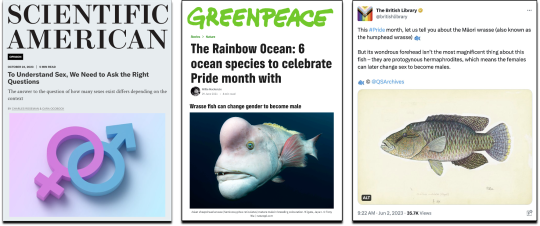
What relevance does LGBTQ+ Pride Month have to sex-changing fish unless there’s an intention to suggest that these examples illuminate the potential for sex changes in humans? But if activists insist on making such far-fetched comparisons, they should be challenged to follow their logic to its ultimate conclusion.
Let’s be honest, animals do a lot of weird things. They enslave other animals, eat their offspring, cannibalize their lovers, kill their newborn twin sisters, and devour their siblings in the womb. Do any of these activists want to justify slavery or embryonic cannibalism because animals do it? Probably not. But it’s equally silly to claim that we can derive grand lessons about human biology and sexual behavior from animals. Male octopuses, for instance, grab a packet of their own sperm with one of their tentacles, shove inside a female’s mantle cavity, and drop it next to her oviduct. This hardly seems like a behavior humans should try to emulate. Are there any objections? Why, then, would we think that fish sexual biology is a better model for us humans than that of octopuses?
What’s more, it frustrates me that those who continuously discuss sex changes in fish don’t get the fish-sex story straight in the first place. In reality, sex changes among the roughly 20 families and seven orders of teleost fish are driven by physiological and hormonal events that are triggered—depending on the species—by factors such as body size, perceived social status, or (in the monogamous clown fish Amphiprioninae) the disappearance of the large, breeding female. It’s also the case that those big, newly minted, dominant female clown fish are viciously aggressive to any fish they do not recognize as part of their group. So, if we’re taking our cues from clown fish, let’s not be hypocritical—let’s go all the way and demand that only extremely large, dominant, hyper-monogamous people who are particularly xenophobic should consider a sex change, and only after all the other females in the neighborhood have vanished. Does that sound reasonable? (I trust you realize I am being facetious here)
It should go without saying, but it appears that some still need a reminder: people are not fish. Fish live in the water. People live on land. When it comes to sex and reproduction, this makes all the difference in the world. In aquatic environments, you can simply release your gametes (eggs and sperm) into the water and let them drift around until they hook up. That’s because, in water, they won’t dry out and die. And neither will your embryos because they’ll be in the water, too. This is why so many fish can produce eggs or sperm at different times in their lives. It doesn’t take any specialized external organs to squirt gametes into the water, just a gonad for gamete production and an orifice for release.
However, the whole situation changes if you live on dry land. As mammals evolved for terrestrial life, they had to acquire adaptations—both structural and behavioral—to prevent their gametes and embryos from drying out. You can’t simply drop your sperms and eggs on the ground and hope for the best. So, male terrestrial animals evolved specialized external body parts for transferring sperm directly into females, who, in turn, have evolved body parts designed for receiving sperm and a chamber for nurturing the developing embryo until it is ready for life on dry land. Additionally—and equally important—both males and females evolved complementary neuromuscular behavioral patterns that allow them to court and mate successfully.
That’s why terrestrial mammals can’t change sex like some fish do. Such a transformation would require females to spontaneously sprout some kind of tube for internal sperm delivery, and males would need to somehow develop a complementary orifice. Moreover—and more importantly—both males and females would need to develop all the necessary internal parts and “plumbing” to make these external structures functional. It’s insufficient to merely alter the appearance of external structures, which can be done surgically (even on pets). A terrestrial animal transitioning from a female to a male would also require developing a complex duct system linking the gonads to the external tube, along with glands to secrete a carrying fluid and nutrients for the sperm (i.e., the Wolffian duct system, prostate, and bulbourethral glands). Going from male to female would involve developing some kind of organ to catch the eggs when they get released into the abdominal cavity, retain them until they encounter sperm, and then house the resulting embryo while it develops (these are derivatives of the Müllerian duct system).
Obviously, none of this could happen. When it comes to mammals, the die is cast prenatally. So, whatever fish do is their business and has absolutely nothing to do with terrestrial mammals. So, let’s drop the clown fish and Asian sheepshead wrasse analogies. Anybody who brings them up simply doesn’t understand evolutionary biology. It is futile to engage in discussions based on such analogies unless, of course, you’re one of those people who think that because some animals reproduce parthenogenically, humans should simply stop having sex altogether and hope for the best.
I want to make it clear that I have a deep understanding and empathy for those of us, including myself, who do not fit the popular stereotypes of any category or group. Throughout my life, I have received what seems to be an unrelenting stream of criticism for the fact that I was never (and still am not) perceived as representative of the norm (whatever that is). Consequently, I grew up defending those who were similarly targeted, and I believe that each of us should be continually mindful and accepting of the rich diversity of the human condition. Each of us should actively and consciously strive to be as compassionate, accepting, supportive, and inclusive as possible.
However, doing so does not require us to abandon reason, turn our backs on biology, or unhinge ourselves from reality.
#Frederick R. Prete#Frederick R Prete#people are not fish#sequential hermaphroditism#sex change#clownfish#human biology#human reproduction#evolutionary biology#reproduction#biology#biology lesson#gender ideology#queer theory#gender identity ideology#science#religion is a mental illness
15 notes
·
View notes
Text
Fish Yap Post 2 - Damselfishes (Pomacentridae)!
The Pomacentridae (damselfishes) are a family that (besides a certain genus, which we will discuss later) many a fishkeeper loathes and many a diver is uninterested in, but truly are a fascinating family of fish that I believe should be much more appreciated than they often are.
Introduction The damselfishes are a family of generally small and colourful fishes, typically inhabiting shallow tropical reefs (although, several species do occur in temperate latitudes, and at greater depths). Most are strictly marine - however, a small handful of species inhabit brackish areas, and occasionally even freshwater habitats. Their small size, hardy nature and bold colours should make them extremely popular aquarium fish, but their popularity is hampered by a single trait - the high aggression of most species. There are over 400 described species of damselfishes, but most people could name only a few - however, those of the genus Amphiprion are extremely well known - these are the anemonefishes, also known as clownfishes.
The name Pomacentridae is derived from the Greek words poma and kentron - meaning 'cover' and 'sting' respectively, in reference to the serrated gill covers characteristic of this family, plus the suffix -idae, the standard suffix used for family-level rank names in animals.

Pomacentrus chrysurus, the Neon Damselfish. A fairly 'typical' damselfish - ovalish in shape, small, brightly-coloured, and inhabiting shallow coral reefs.

Amphiprion percula, the Eastern Clown Anemonefish. This species, and others of it's genus, diverge further from the 'typical' damselfish in appearance and behaviour, but are much better known.
Taxonomy Unlike the wrasses of the previous post, there has been little changes over the years as to what and what isn't included in the family Pomacentridae - however, the family's internal relationships, and relationship to other fishes, is much more contested. Previously placed in the order Perciformes (a horrendously large 'wastebasket taxon', including many groups that are not in fact closely related). Some classifications place the Pomacentridae as incertae sedis (of uncertain placement) within the group Ovalentaria, but Near & Thacker 2024 (my go-to paper for family-level and higher fish taxonomy) places them in the order Blenniiformes (in a broader sense, including cichlids, mullets, surfperches and many others, rather than just the blennies). The internal relationships are confused too, with many subfamilies of Pomacentridae being recognised, but the number of which varies and every paper I read places different genera into different subfamilies, so I really don't know what's going on there :P
Feeding, Diet and... Farming? Most damselfishes fall into one of two main feeding guilds - generalist omnivores and planktivores. The planktivores, including genera like Chromis, Amphiprion and Lepidozygus, will typically form groups in areas of high water flow to pick at passing plankton. Planktivorous damselfishes tend to be less aggressive than most, but this is far from a universal rule. The generalist omnivores, on the other hand, are more prone to aggression as they maintain territories in order to ensure they will have enough food - and any intruder, regardless of it's size, will be aggressively chased off. These species consume small crustaceans and algae - and this penchant for algae has led to some truly fascinating behaviour in some damselfish species. The genus Stegastes are sometimes referred to as 'farmerfishes', as they actively cultivate palatable species of algae within their territories, carefully removing unpalatable algae species as if weeding a garden, in order to avoid these species competing with the fish's preferred algae, and when the farmerfish does consume it's 'crop', it is careful to leave enough for the algae to regrow. The algae too benefits from this relationship - although the farmerfish may eat some of it, the algae is guaranteed a clear spot to grow free of competition, and protection from herbivores that may consume it entirely. One farmerfish species has even domesticated livestock on it's algae farms - the Longfin Damselfish Stegastes diencaeus cares for swarms of the tiny mysid shrimp Mysidium integrum on their 'farms', protecting them from potential predators. Curiously, the Longfin Damselfish does not consume the mysids, and the shrimp are actually attracted to the scent of the damselfish - why then is the fish protecting these mysids, if it is not cultivating them to eat? It seems that they act as a means of fertilisation for the damselfish's cultivated algae - the mysids feed on plankton, and their poo sinks onto the algae patch, allowing the algae to access extra nutrients, helping it grow more quickly. So perhaps, the mysids are less like livestock, and more like farmhands!

Stegastes diencaeus, the Longfin Damselfish.

Chromis viridis, the Blue-green Chromis, a planktivorous damselfish
Anemonefishes Of course, no discussion of damselfishes would be complete without mention of their most famous species - the anemonefishes (AKA clownfishes). Traditionally classified in two genera - Premnas (1 species) and Amphiprion (all the rest), but recently the two genera have been merged, so now all anemonefishes are in the genus Amphiprion. These fishes are well known for their symbiosis with sea anemones, but how much the anemone gets out of this relationship is unclear. This could be a commensal relationship (where one species, the anemonefish, benefits, but the other, the anemone, is unaffected) or a mutualist relationship (both species benefit). It has been suggested that the anemonefish swimming amongst the anemone's tentacles may aid in oxygenating the anemone, and that the anemone may consume the fish's leftovers, but this remains a subject of debate. And the type of anemone matters for anemonefishes - not just any anemone will do. Only about 10 anemone species are known to host anemonefishes, and different anemonefish species utilise different anemones. Some even require a specific form of a particular anemone species - in my time diving, I've noticed that the Cinnamon Anemonefish Amphiprion melanopus always lives in the colonial form of the Bubbletip Anemone Entacmaea quadricolor, whereas the Spinecheek Anemonefish Amphiprion biaculeatus inhabits the same species, but always the solitary form. Anemonefishes reliance on these naturally uncommon anemone species means they have never been common fishes, with usually only a handful on each reef. This makes them incredibly susceptible to overcollection for the aquarium trade. Thankfully, many anemonefishes have proved relatively easy to breed in captivity, so the vast majority in fish stores are captive bred (although I have seen wild caught anemonefish for sale in my local fish stores, usually they will be labelled as such and command a premium price).
Speaking of breeding, anemonefishes have similar sex-swapping habits and strict hierarchical harems as the wrasses discussed in my last post, but there is one crucial difference - whereas wrasses start out female and become male only if they reach the dominant rank, all anemonefishes are born male, and only the head honcho of the anemone gets to become female. So yes, Marlin in Finding Nemo should have turned female after Coral was eaten by the barracuda. When anemonefishes spawn, they deposit the eggs onto a solid object, and the male will keep the eggs meticulously clean and oxygenated by fanning water over them with his fins. Once the eggs hatch, however, they're on their own - the larvae drift out onto the open sea to join the plankton as they develop. Once ready to settle down as proper juvenile fish, the larvae will seek out a reef, homing in on the smell and sound of the reef to locate their new home.

Amphiprion melanopus, the Cinnamon Anemonefish

Amphiprion biaculeatus, the Spinecheek Anemonefish. This species was previously called Premnas biaculeatus, but was moved to the genus Amphiprion.
A Variable Bunch - the Spiny Chromis Another notable damselfish for it's breeding habits (and the consequences thereof) is Acanthochromis polyacanthus, the Spiny Chromis (this is somewhat of a misnomer - it is not a close relative of the numerous other damselfishes called 'chromis'). In most respects of it's biology, it is a standard planktivorous damselfish, but it is distinguished from all others by completely skipping the planktonic larval stage in it's development - the eggs hatch out as already metamorphosed juvenile fish. This increases the survivourship of the young, as drifting in the plankton is a treacherous time for a young fish, but does mean the young do not travel far from where their parents lived. As a result, there is very little genetic connectivity between populations of Spiny Chromis, which may be , so many localised colour forms have arisen. Given a long enough period of isolation, these colour forms may eventually become distinct, new species.

A Spiny Chromis from the southern Great Barrier Reef

A Spiny Chromis from the northern Great Barrier Reef

A Spiny Chromis from the Philippines

A Spiny Chromis from Vanuatu
And finally, have a bunch of pictures of some of my favourite species of damselfish

Neopomacentrus taeniurus, the Freshwater Demoiselle. This species does enter the lower reaches of freshwater rivers and streams, but also inhabits brackish areas and coastal reefs.

Amblyglyphidodon aureus, the Golden Damselfish

Dascyllus trimaculatus, the Domino Dascyllus. Juveniles of this species inhabit anemones like anemonefishes, but abandon this behaviour as adults.

Pycnochromis vanderbilti, the Vanderbilt's Chromis. This species was formerly called Chromis vanderbilti, but along with many other former members of the genus Chromis, was recently moved to the new genus Pycnochromis, as it was found they were not as closely related to other Chromis as was previously thought.

Parma polylepis, the Banded Scalyfin. All the previous species I've mentioned in this post are tropical species, but this one hails from the temperate zones around Australia

A species that should be familiar to readers from the US, Hypsypops rubicundus, the Garibaldi, which inhabits the temperate kelp forests of the northeast Pacific.
6 notes
·
View notes
Note
Tell me about the fish you saw snorkeling please :)
Oh my GOD I nearly burned my self with my coffee when I saw this. Thank you so much for asking, but also you've opened the flood gates because it just so happens I am about to dump so many fish on you. While I primarily study freshwater fishes, I am a lover off all things aquatic, so here we go (all these images are from the internet):
Parrot fish galore and HUGE ones at that. The biggest one I saw looked like this. I don't know my scarids very well, but I do know that I saw a bumphead parrotfish. So funny looking. I was honestly surprised by how all the fish out there are CONSTANTLY nipping at the corals, but the current was pretty strong so we all had to swim a lot. It makes sense that they always need to be eating. I had no idea life on the reef was so turbulent
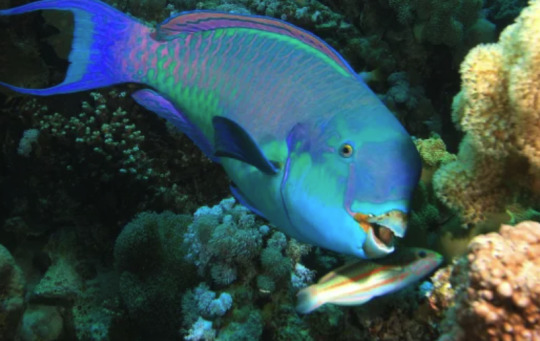
A lot of acunthurids. No blue tangs but plenty of brown ones and some unicorn tang! The ones I saw had really small humps.
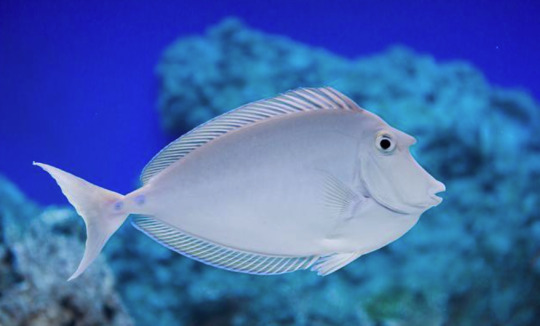
So the common name for acunthirds is surgeonfishes because they have these sharp, blade like spines on their caudal peduncle called a scalpel. You can see it a bit more clearly on the Clown Unicornfishes (which were my fave cause the colors were so bright). Here they're the bright orange processes near the tail.
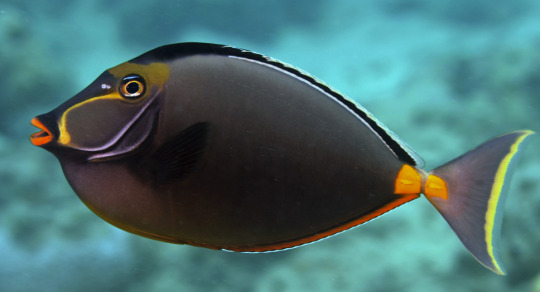
Wrasses. SO many wrasses. We saw birdnose wrasses with their long snoots, moon wrasses that were as colorful as rainbow lorikeets. My favorite were the cleaner wrasses following all the big parrotfish around and eating their ectoparasites,
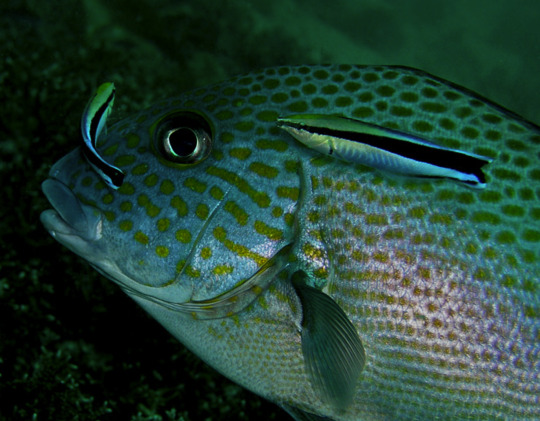
I saw a moray!! That was the most unexpected find for me. I was the only one in my group to see one, but it was so far out that the crew working the sailboat had to call me back in 😅 It was brown and spotted black and looked just like this guy. I didn't actually see his head, but I saw his long long body. He was huge!!

Some gobies hiding in their holes. Apparently some species of goby have a mutualistic relationship with shrimp. The shrimp digs a series of tunnels in the sand and the goby stands sentinel at the entrance. The shrimp then maintains contact with the goby with its long antennae so that it knows if the goby moves or startles when predators are nearby.
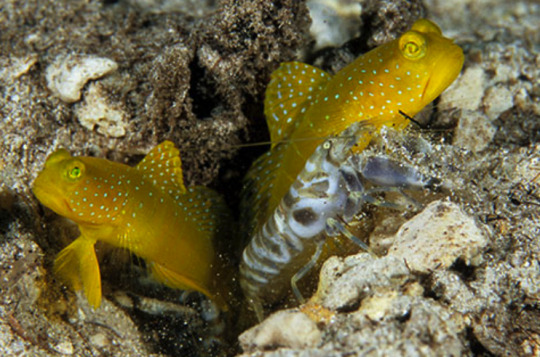
The goatfish was probably my second favorite find after the moray because I had no idea they were out there. Goatfish have two long chin barbels covered in tastebuds that they use to probe along the sand in search for prey. They are quite dextrous barbels too. They flick em around so fast!
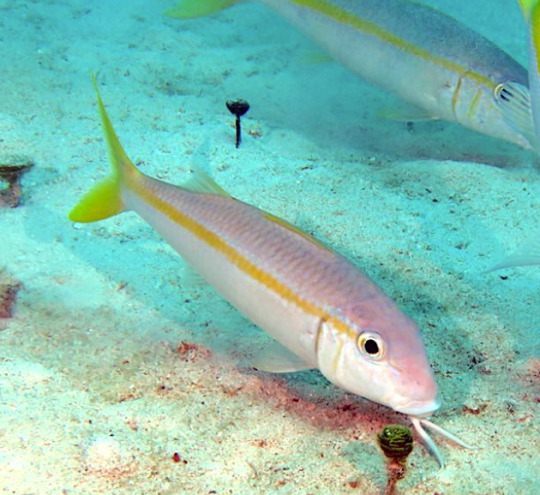
I got stung by something! it whipped me across the face pretty much 20 minutes into the water and it felt long and filamentous so i thought maybe it was some stray strand of anemone or jellyfish with active nematocysts. The crew member said it was likely a small jelly so woohoo! I got stung by a jelly on the great barrier reef :D
Triggerfish. Iw as hoping to see more tetraodonotiforms like puffers or filefish or a cowfish maybe, but I'm glad I still got to see at least one representative of the order cause they are among the most bizarre groups of fishes

This Moorish Idol that looked exactly like Gill from finding nemo
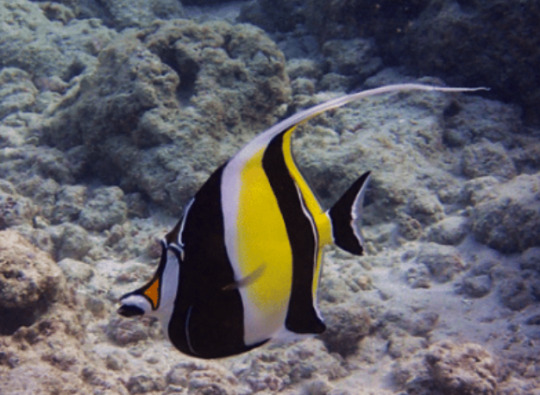
Lemonpeel angelfish, bluegirdle angelfish, emperor angelfish, you name it.


a lot of chaetodontids too. As I said, I don't study marine fishes so all the butterfly fishes looked so similar to me XD most of them were some combination of white, yellow, and black with their characteristically tall bodies and narrow snouts.


Giant clam!!! THEY WERE SO BIG. And so colorful. The movement of their spiracle truly hypnotized me.
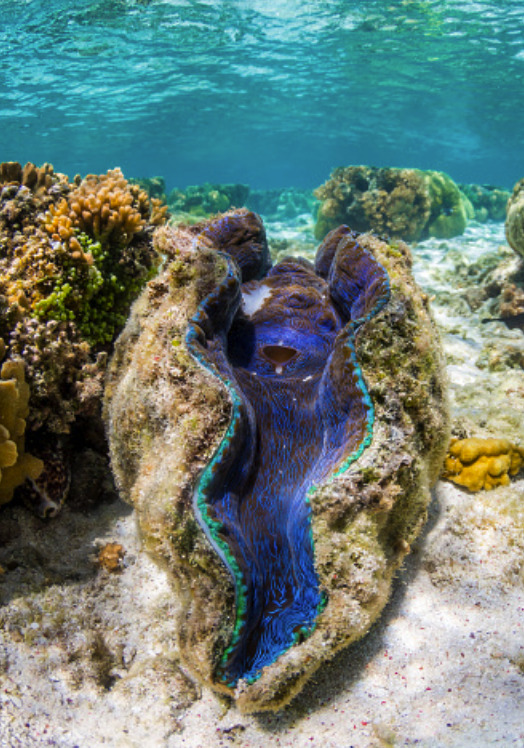
Alright. That's all I got time for at the moment, as I need to pack and head up to the rainforest for the last leg of my trip. I'm sure I have forgotten dozens of fish already XD Thank you for attending my show and tell and for expressing interesting. Truly, I'm living any biologists dream rn, and I couldn't be more grateful for the opportunity to visit such a beautiful part of the world 🥲
25 notes
·
View notes
Text

North Canyon - Ciceros Strait
Endless Ocean: Blue World, Nintendo Wii
they did a great job emulating how colors appear depending on depth in this game: reds disappear surprisingly quickly!
#endless ocean#endlessocean#endless ocean 2#endless ocean blue world#endlessoceanphotos#nintendo wii#wii#clown wrasse#ciceros strait
13 notes
·
View notes
Text
Currently focused on the idea of skins for the carnival au.
The themed skin ideas I have so far is
Ocean creatures.
Myths/folklore/super natural
With other idea that just skin ideas in general like robots and sleep over.
Edit: I have now completing the ideas for the sea creatures and folklore skins :D
Ragatha- jelly fish and fairy
Gangle-ribbon eel and oni
Jax- sea bunny and Jackalopes
Zobble- blue ringed octopus and chimera
Kinger- whale shark (would of matched with queenie as a great white shark)
and death/reapers (match with queenie as Mother Earth/life)
And Pomni as a cleaner wrasse fish and a faun/satyr
Also for kaufmo I had the idea of his sea crew skin being a clown fish.
Currently now have rough sketch ideas for all sea creatures skins ( 16 hours of work so far) I have school work to do so this will take a while but I’m glade to have a little bit of art inspiration so far since COVID.
I got the idea to draw these skin ideas from a time I wanted to draw ragatha umbrella and then it turned into a jelly fish along with another artist who drew bug skin for the character and my Tadc carnival oc room being a dlc room that have a ton of Easter eggs like.
5 notes
·
View notes
Text
Today I met a Faggot Fish
I’m currently visiting an aquarium in southern Florida. For some context, I look very visibly queer. In this wide land of posh country clubs and golf bros- I am very much a fish out of water.
I saw some Bluefish, and Clown Wrasse But what REALLY stuck out to me was this Rainbow Parrotfish. For anyone that doesn’t know what this fish looks like, I’ll insert a photo below.
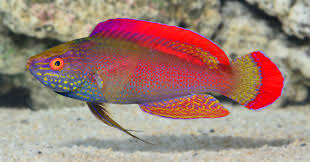
This fish just reeks of homosexuality- it is quite visibly dripping with faggotry. For fucks sake this fish was all decked out in and had the lips of a Youtube MUA twink that had just got a discount on lip filler. This fish just has the vibe of a boy fish that kisses other boy fishes. And a lot of them. All of the other fish in this tank looked completely ‘normal’-based on my little knowledge of tropical fish standards. they were all silver, shiny and all crescent shaped like half of a broken mirror. As beautiful as they were in symmetry, their synchronized movements were jarring compared to the Faggot Fish. He was the only one swimming alone. And he was beautiful.
Now, evolution is a funny thing. Species develop certain traits to survive. The most suitable of one’s characteristics for one’s environment get passed down- natural selection takes charge and the fittest win.
The thing about Faggot Fish is that I’m not particularly sure which instances proved that it looks would be valuable to its survival to be so fashuonable cunty prissy and proud. This little zesty fish warmed my heart. The school of silver fish were so clearly evolved for conformity. To fit in. For survival.
The very act of conformity in the natural world/our own society exists as a reminder that standing out can be deadly. Conformity exists within safety. Conformity often exists out of fear. As someone who looks really fucking gay in Florida, this stuck with me. Maybe that’s why Faggot Fish’s defiant existence is resonating with me so much at the moment.
Collaged next to those sparkly silver little fuckers, Faggot Fish was beautiful.
To me, the very the existence of a visibly unique trait on an animal/person is not only a marker of its celebration of survival, but it is a marker that it’s been loved. Years of natural selection and evolution resulted in this gay looking fish.
This is a thought I lingered on for a while.
I wonder if anyone has ever been on the outside of my life looking in. I wonder if my existence has ever been a parable for someone else’s.
I hope I was someone’s Faggot Fish today.
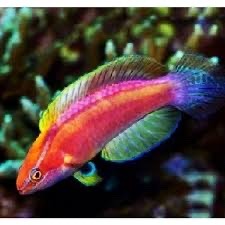
This zesty fucker.
#queer community#zest fest#oceancore#we have only discovered a tiny part of the ocean and I think the rest of it is all gay
5 notes
·
View notes
Text
Update on Saltwater Aquarium Tank!

View On WordPress
#Aquarium#Aquarium life#clown fish#damsels#fish#fish tank#Picasso Trigger fish#Saltwater tank#wrasse
0 notes